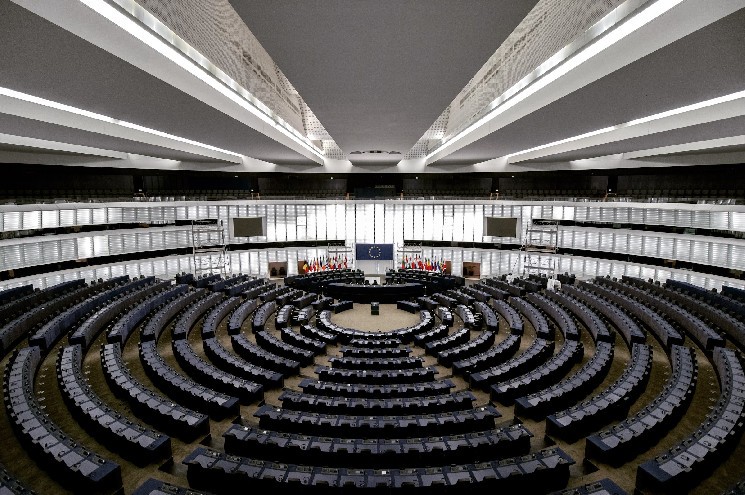Industry Offers Cautious Welcome to EU’s Landmark Crypto Law MiCA

The European Union’s Markets in Crypto Assets Regulation (MiCA) could prove transformative, CoinDesk has been told, even if some in the industry query whether it will meet its goals of offering a single, clear rulebook for the 27-nation bloc.
MiCA would require crypto companies to register with the authorities, to hold sufficient capital to steady stablecoins and to offer clear and fair information to budding investors – and its text is, after many years, now almost finalized.
The world of crypto moves faster than legislators do, and this law has had quite the journey.
Originally designed to regulate crypto actors like issuers and wallet providers in an era where initial coin offerings, including scams, were rife, the draft bill evolved alongside innovations in the sector.
Between conception and completion, new provisions were inserted or contemplated to deal with the defunct Facebook-backed currency project Libra, later renamed Diem; the energy use of bitcoin mining, the rise of non-fungible tokens (NFTs); decentralized finance (DeFi); and algorithmic stablecoins like the now-doomed terraUSD.
It’s still not settled. A draft that leaked last week was viewed by some negotiators as the final version – but, at the last minute, it was opposed for not sticking to the political deal struck at the end of June. (While negotiations are being held in secret, three sources briefed on the talks told CoinDesk that objections came from France; one of them said countries other than France were also involved, but declined to say which.)
Rosy
The law’s architects are still keen to trumpet its benefits – notably, allowing a single framework under which companies can operate across the bloc of 500 million consumers.
“Legal certainty was one of the main reasons why we need MiCA,” said Stefan Berger, the lawmaker who negotiated the law for the European Parliament, in a written interview. “We now have a legal framework that can be relied on as an investor but also as an issuer and offeror … order is created in the Wild West of the crypto world.”
By and large, the industry seems to agree with his rosy assessment. The law is overall positive, Marina Markezic, executive director of the European Crypto Initiative, told CoinDesk in an online interview.
Having the new law “is a drastic change” from the status quo, she said, referring to “the new world after MiCA” in which the crypto community will need to “grow up” and consider legal compliance as they develop projects.
“Overall, I would say, MiCA is positive,” she added. “It’s unifying Europe, and we’re going to have mostly the same rules for all service providers.”
But that high-level view masks plenty of detailed gripes. While a boon for crypto services such as wallet providers, lawmakers haven’t quite achieved their vision of legal clarity for everyone – particularly in newer areas of Web3 technology, CoinDesk was told.
“The NFTs bit [of the law] is unnecessarily complicated,” Blockchain for Europe’s Robert Kopitsch said in an online interview. “Depending on who you ask, you get a different answer, which is never a good thing.”
EU governments wanted NFTs to be exempted from the regulation entirely – but lawmakers at the European Parliament argued that, in reality, many so-called NFTs on the market were in fact traded like financial products, and capable of similar kinds of mis-selling and market abuse.
The current legal compromise means any assets issued as part of a series will likely be deemed fungible, meaning that in practice the bulk of self-proclaimed NFTs will be caught by the regulation. Worse still, it could mean individual national enforcers could take inconsistent views about whether a particular asset needs to issue a white paper.
In other areas, like caps on the use of non-euro stablecoins – introduced by governments panicking that a Libra-style payment system could usurp their own currency – the final compromise text seems to have found better favor.
A compromise deal that would see the use of many stablecoins limited to 1 million transactions per day is “quite a good end result,” because it will only capture real-world payments rather than trading activity, Patrick Hansen, Crypto Venture Advisor at Presight Capital, told CoinDesk in an online interview. That view may still change, since the scope of the cap is what France objected to.
But Kopitsch argues that, for stablecoins not tied to a fiat currency, the conditions attached are so arduous as to not make them worth pursuing.
“Let’s assume you have a gold-pegged stablecoin, and it has to be redeemable at all times at the purchase price – that’s impossible, nobody will issue such a token,” Kopitsch said. Those passing the law “just should have been straight and said we’ll just ban anything that looks like it, instead of making it pretty much impossible to launch.”
Global impact
Compared to Markezic, Hansen is less fulsome about the impact MiCA will have – but even he reckons there will be wider global repercussions.
“I don’t think it ushers in a new era of crypto markets overall,” Hansen said, but he added that he “wouldn’t be surprised to see that piece of regulation like Mica having a lot of influence around the world,” given the desire to avoid creating loopholes via regulatory divergence.
That view appears shared by Binance boss Changpeng “CZ” Zhao, who recently characterized the law as a global standard for others to copy – and by Berger himself.
“There is a lot of international interest in MiCA coming from my U.S. colleagues,” said Berger, who recently visited New York City. “It would be desirable if in the future we had not only a European MiCA, but a global MiCA.”
Sandali Handagama contributed reporting.






 Bitcoin
Bitcoin  Ethereum
Ethereum  Tether
Tether  USDC
USDC  TRON
TRON  Dogecoin
Dogecoin  Cardano
Cardano  Bitcoin Cash
Bitcoin Cash  Chainlink
Chainlink  LEO Token
LEO Token  Stellar
Stellar  Monero
Monero  Zcash
Zcash  Litecoin
Litecoin  Hedera
Hedera  Dai
Dai  Cronos
Cronos  OKB
OKB  Tether Gold
Tether Gold  Ethereum Classic
Ethereum Classic  KuCoin
KuCoin  Gate
Gate  Algorand
Algorand  Cosmos Hub
Cosmos Hub  VeChain
VeChain  Dash
Dash  Stacks
Stacks  Tezos
Tezos  TrueUSD
TrueUSD  IOTA
IOTA  Basic Attention
Basic Attention  Decred
Decred  Theta Network
Theta Network  NEO
NEO  Synthetix
Synthetix  Qtum
Qtum  Ravencoin
Ravencoin  0x Protocol
0x Protocol  DigiByte
DigiByte  Nano
Nano  Zilliqa
Zilliqa  Siacoin
Siacoin  Numeraire
Numeraire  Waves
Waves  Ontology
Ontology  Enjin Coin
Enjin Coin  Status
Status  Pax Dollar
Pax Dollar  BUSD
BUSD  Hive
Hive  Lisk
Lisk  Steem
Steem  Huobi
Huobi  NEM
NEM  OMG Network
OMG Network  Augur
Augur  Bitcoin Gold
Bitcoin Gold  Ren
Ren  HUSD
HUSD